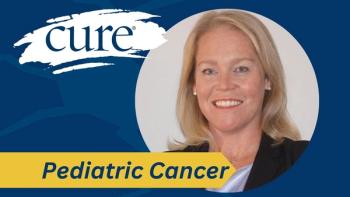
Looking Ahead in the Treatment of ER-Positive Metastatic Breast Cancer
CURE speaks with Joyce O’Shaughnessy, MD, on the rise of treatment options for patients with estrogen receptor (ER)-positive metastatic breast cancer.
New agents for patients with estrogen receptor (ER)-positive metastatic breast cancer are being approved and examined, giving patients more treatment options than ever before.
In an interview with CURE, Joyce O’Shaughnessy, MD, the co-chair of Breast Cancer Research and chair of Breast Cancer Prevention Research at Baylor-Sammons Cancer Center in Dallas and for The U.S. Oncology Network, provides an update on existing research and a look toward the future.
Ibrance
O' Shaughnessy highlights four agents: Ibrance (palbociclib), Keytruda (pembrolizumab), abemaciclib, and buparlisib. This group of agents is worth examining, O’Shaughnessy says, because it encompasses entirely new ideas and new options for patients as well as novel avenues from follow-up data from clinical trials.In February 2015, the CDK 4/6-inhibitor Ibrance was approved by the FDA in combination with Femara (letrozole) for the treatment of postmenopausal women with ER-positive, human epidermal growth factor receptor 2 (HER2)- negative advanced breast cancer as initial therapy for metastatic disease.
The approval for the combination of Femara and Ibrance was based on a 10-month benefit in progression- free survival (20.2 months with the combination compared with 10.2 months with Fermara alone) in the phase 2 PALOMA-1 trial. Data also showed a reduction in the risk of disease progression by 51 percent with the addition of Ibrance. Ibrance has already changed practice, according to O’Shaughnessy, and should be used by all breast cancer physicians in its approved setting.
The agent also received a priority review designation in December 2015 in combination with Faslodex (fulvestrant) for pretreated patients with hormone receptor (HR)-positive, HER2-negative metastatic breast cancer. Based on findings from the phase 3 PALOMA-3 trial, the combination doubled progression-free survival (PFS) and delayed disease progression by over five months compared with fulvestrant alone. These data were presented at the 2015 at the 2015 ASCO Annual Meeting and published in The New England Journal of Medicine.1,2
Abemaciclib
O’Shaughnessy sees Ibrance as the standard of care now in the frontline setting, but says that another CDK4/6 inhibitor, abemaciclib, could make its way into later lines of therapy. In early October 2015, abemaciclib received a breakthrough therapy designation from the FDA as monotherapy for heavily pretreated patients with refractory hormone- receptor (HR)-positive advanced breast cancer. The designation was granted based on data from the phase 1 JPBA trial, which included 36 patients with HR-positive disease. In the single-arm trial, abemaciclib elicited an objective response rate of 33.3 percent. The clinical benefit rate with abemaciclib was 61.1 percent when including those with stable disease for 24 weeks or more. O’Shaughnessy says she is eagerly anticipating the release of updated data from MONARCH-1, which she says could change practice.
“It’s possible that abemaciclib could be available by the end of the year if the data are good,” O’Shaughnessy says. “I don’t know if they’ll meet FDA requirements or not.”
Keytruda
With regard to the advanced setting of metastatic disease, O’Shaughnessy also plans to highlight the potential for immunotherapy — a class of drugs that received a lot of attention in 2015. Most of the research done to date with the PD-1 inhibitor Keytruda in breast cancer has been in the setting of triple-negative disease. Most immunotherapies have been eliciting response rates around 20 percent in breast cancer, O’Shaughnessy says, but it’s still somewhat unknown how long these responses will last. In the phase 1b KEYNOTE- 028 trial presented at the 2015 San Antonio Breast Cancer Symposium (SABCS), Keytruda elicited an overall response rate of 12 percent in PD-L1—positive patients with ER+/HER2- advanced breast cancer.3 Data from the KEYNOTE-012 trial, conversely, showed that Keytrudahad an ORR of 18.5 percent in patients with PD-L1—positive triple negative breast cancer (TNBC.)4
In order to improve response rates with Keytruda and immunotherapies as a whole in breast cancer, O’Shaughnessy says, more research needs to be done in the area of patient selection. “We’re going to need a better way to select patients, I think, than PD-L1,” she says. “One of the leading hypotheses is that cancers with heavier mutational loads may benefit and so, we may need to explore that particular hypothesis in breast cancer.”
Depending on follow-up data and data from future studies, O’Shaughnessy says, the agent could become available in late 2016. Positive data — or even an approval — in TNBC could encourage more studies with the agent in ER-positive disease and off-label use.“It’s very early days, but we would certainly welcome immunotherapy options for patients.”
Buparlisib
Another drug that may raise more questions than provide answers, O’Shaughnessy says, is buparlisib.In the phase III BELLE-2 study presented at SABCS, the PI3K inhibitor buparlisib only modestly improved PFS in patients with endocrine-resistant HR-positive/HER2- negative advanced breast cancer.5 Median PFS with buparlisib plus fulvestrant was 6.9 months compared with five months for placebo plus fulvestrant. However, the PFS benefit was more substantial — seven versus 3.2 months — among patients with PIK3CA mutations identified by circulating tumor DNA.
O’Shaughnessy says the agent provides valuable insight into the direction of future research. “Buparlisib will not be going forward for additional development,” she says. “[Results from BELLE-2 shed light on] the concept of using circulating tumor DNA to try to select patients for PIK3CA mutations for studies.
Overall, the four agents lie on different regions of their development timelines. Ibrance, O’Shaughnessy says, will almost certainly continue to change practice, while buparlisib will likely not advance further in its current state. The other two agents lie somewhere in the middle, as they have shown promise but work still remains.
O’Shaughnessy hopes to provide some answers to her audience, but she understands that some of her talk—and some of the data—will raise new questions. Regardless, a discussion with hundreds of breast cancer specialists will certainly help to advance cancer care for an important population of patients.
References
- Turner NC, Ro J, Andre F, et al. PALOMA3: A doubleblind, phase III trial of fulvestrant with or without palbociclib in pre- and post-menopausal women with hormone receptor-positive, HER2-negative metastatic breast cancer that progressed on prior endocrine therapy. J Clin Oncol. 2015;33 (suppl; abstr LBA502).
- Turner NC, Ro J, André F, Loi S, et al. Palbociclib in hormone-receptor-positive advanced breast cancer. N Engl J Med. 2015;373(3):209-219.
- Rugo HS, Delord J-P, Im S-A, et al. Preliminary efficacy and safety of pembrolizumab (MK-3475) in patients with PD-L1—positive, estrogen receptorpositive (ER+)/HER2-negative advanced breast cancer enrolled in KEYNOTE-028. Presented at the 2015 San Antonio Breast Cancer Symposium; San Antonio, TX; December 8-12, 2015. Abstract S5-07.
- Nanda R, Chow LQ, Dees EC, et al. A phase Ib study of pembrolizumab (MK-3475) in patients with advanced triple-negative breast cancer. Paper presented at: 2014 San Antonio Breast Cancer Symposium; December 9-13, 2014; San Antonio, TX. Abstract S1-09.
- Baselga J, Im S-A, Iwata H, et al. PIK3CA status in circulating tumor DNA (ctDNA) predicts efficacy of buparlisib (BUP) plus fulvestrant (FULV) in postmenopausal women with endocrine-resistant HR+/HER2—advanced breast cancer (BC): First results from the randomized, phase III BELLE-2 trial. Presented at: San Antonio Breast Cancer Symposium; December 8-12, 2015; San Antonio, TX. Abstract S6-01.




